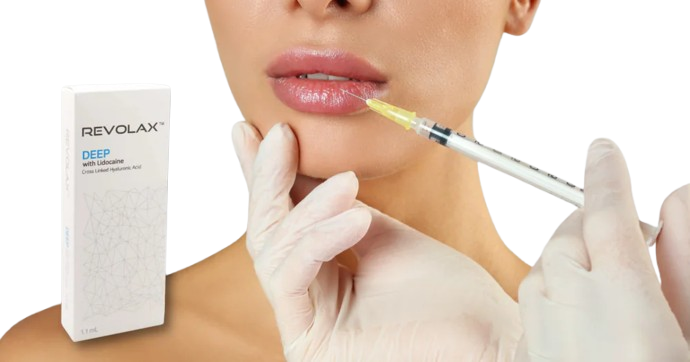Lumigan
Lumigan Eyelashes – Longer, Thicker Lashes
Sep 2, 2025
Did you know that the average eyelash only grows to about 10 millimeters and lasts around 150 days before naturally shedding? Unlike scalp hair, eyelashes spend very little time in their active growth phase, which is why their length and density are naturally limited. This biological constraint has inspired research into ways to safely extend the lash growth cycle.
One unexpected discovery came with Lumigan (bimatoprost ophthalmic solution), a prescription medication initially developed to lower eye pressure in patients with glaucoma. Doctors noticed a secondary effect: patients’ lashes gradually became longer, thicker, and darker. While Lumigan itself is not approved for cosmetic use, this finding led to the development of Latisse, a bimatoprost product specifically approved for enhancing eyelashes.
In this article, we’ll explore the science behind Lumigan’s lash-enhancing effects, review the clinical evidence, and discuss safety considerations, including possible side effects like eyelid skin darkening and iris pigmentation.
Key Takeaways
- Lumigan (bimatoprost) was developed for glaucoma but was later observed to stimulate eyelash growth, leading to the FDA approval of Latisse for cosmetic use.
- Lash enhancement occurs because Lumigan extends the anagen (growth) phase of hair follicles, producing longer, thicker, and darker lashes over time.
- Results are gradual, often appearing after 8–12 weeks of consistent use, and are reversible once treatment stops.
- Common side effects include eyelid skin darkening, eye redness (hyperemia), and irritation. Less common risks include iris pigmentation changes and unintended hair growth if the solution spreads beyond the lash line.
- Cosmetic use of Lumigan is considered off-label; only Latisse is FDA-approved for enhancing eyelashes.
- Healthcare providers play a key role in counseling patients, setting realistic expectations, and reinforcing safe application practices.
About: Trusted by over 2,000+ global clients since 2014, Maylips has become a leading supplier of cosmetic, skincare, and orthopedic products for medical and aesthetic professionals. Maylips offers a wide range of authentic brand-name products at competitive wholesale prices, sourced from around the world. If you’re looking to buy Lumigan online, contact our sales team for guidance.
Mechanism of Eyelash Enhancement with Lumigan
Lumigan (bimatoprost) promotes eyelash growth by extending the anagen phase, the active stage of the hair cycle responsible for lash length and pigmentation. When applied consistently to the eyelid margins, bimatoprost interacts with prostaglandin receptors in the hair follicles, stimulating lashes to grow longer, thicker, and darker over time.


Unlike standard cosmetic mascaras or serums, which only create the appearance of fullness, Lumigan induces biological changes at the follicular level. Because the process works with the body’s natural growth cycle, results emerge gradually; usually after several weeks of regular use. Once treatment is stopped, lashes return to their original state within a few months, underscoring the reversible nature of these cosmetic effects.
Clinical Evidence of Lumigan-Induced Lash Growth
Lumigan was initially designed for glaucoma management, but its unexpected cosmetic side effect quickly attracted attention. Patients noticed visible changes in lash length and density during treatment, sparking research into bimatoprost’s role in hair follicle stimulation. This ultimately led to the development of Latisse, an FDA-approved product specifically indicated for eyelash hypotrichosis.
Key Studies & Clinical Reports
- Review of Optometry (2008): This article highlights anecdotal and clinical evidence of increased lash length, thickness, and pigmentation among glaucoma patients treated with Lumigan.
- Bimatoprost Gel Suspension Study: This research demonstrates significant lash enhancement when bimatoprost was applied directly to the lash base, reinforcing its follicle-stimulating effects.
These findings firmly link Lumigan’s therapeutic properties to its aesthetic benefits. For clinicians, they provide clear evidence that bimatoprost can enhance lashes, while also guiding conversations about regulatory distinctions between Lumigan dosage for glaucoma and the approved cosmetic use of Latisse.
Safety Risks Associated with Lumigan Eyelash Use
While the cosmetic potential of Lumigan is well established, its off-label use for lash growth requires careful consideration of possible side effects. Documented reactions include:
- Periocular Hyperpigmentation: Gradual darkening of the skin around the eyes, which is usually mild and often reversible once treatment stops.
- Eyelid Skin Discoloration: Noticeable pigmentation of the eyelid skin, sometimes resolving completely after discontinuation.
- Conjunctival Hyperemia: Redness of the eye, generally mild and subsiding after the medication is withdrawn.
Additional risks with prolonged or imprecise application include:


- Eye irritation or dryness, particularly with extended topical exposure.
- Iris pigmentation changes, rare when applied only to the lash line but documented in some patients.
- Unintended hair growth if the solution spreads beyond the targeted area.
Patients should be informed that while many cosmetic changes are reversible, other effects, like iris darkenin,g may be permanent. Proper application technique, along with routine follow-up, helps minimize these risks and supports safe use.
Guidance for Clinicians Discussing Cosmetic Effects of Lumigan
Healthcare providers often field questions about Lumigan’s lash-enhancing potential. Clear, evidence-based counseling is essential to balance cosmetic interest with medical safety.
What Clinicians Should Do
- Explaining the mechanism of lash growth, emphasizing that results appear gradually, usually after several weeks.
- Outlining potential side effects, noting which are temporary (e.g., eyelid hyperpigmentation) and which may persist (e.g., iris pigmentation).
- Comparing Lumigan and Latisse: while both contain bimatoprost, only Latisse is FDA-approved for cosmetic use, whereas Lumigan’s use for lash growth remains off-label.
- Recommending precise application techniques to avoid product spread and minimize unintended effects.
- Framing safety appropriately: Bimatoprost has been well-tolerated in studies; however, patients using it solely for cosmetic purposes should be closely monitored.
By setting realistic expectations and reinforcing safe application practices, clinicians can help patients make informed choices that align with both their health and cosmetic goals.
Conclusion
Lumigan’s role in producing longer, thicker, darker lashes began as a surprising observation in glaucoma patients and has since evolved into a topic of significant cosmetic interest. By extending the lash growth cycle, bimatoprost stimulates follicles in a way that cosmetic products cannot.
While results are supported by clinical evidence, patients must weigh the potential benefits against possible side effects. Importantly, they should also understand that Latisse, not Lumigan, is the approved product for eyelash enhancement. With careful counseling and correct application, bimatoprost-based treatments can be both practical and safe, offering patients an informed path toward fuller lashes.
FAQs
1. How does Lumigan cause eyelash growth?
It works by prolonging the anagen growth phase, allowing lashes to grow longer, thicker, and darker with regular use.
2. How long before I see results from Lumigan?
Most patients notice visible lash changes within 8–12 weeks, with full results typically by 16 weeks.
3. Are the eyelash changes permanent after using Lumigan?
No. After stopping treatment, lashes gradually return to baseline within a few months.
4. What side effects come with using Lumigan?
Possible reactions include periocular hyperpigmentation, conjunctival hyperemia, and mild eye irritation. These effects often improve after discontinuation, though some may persist.
5. Can an individual use Lumigan instead of Latisse for eyelash growth?
Both contain bimatoprost, but only Latisse has FDA approval for cosmetic lash enhancement. Using Lumigan for this purpose is off-label.
6. Is eyelash enhancement in glaucoma patients safe?
Bimatoprost has been well-tolerated in glaucoma studies, but safety for purely cosmetic use should be evaluated on a case-by-case basis.
7. Can unintended areas develop hair growth with Lumigan?
Yes. If the solution spreads beyond the lash line, unwanted hair growth can occur, highlighting the importance of precise application.
Talk with our sales representative.
Book a Meeting
References
Fernandez‐Gonzalez P, Truchuelo‐Díez MT, Gómez‐Sánchez MJ. Open clinical trial evaluating the efficacy of a novel eyelash growth enhancer with peptides and glycosaminoglycans. Journal of Cosmetic Dermatology. 2024;23(6):2170-2180. doi:10.1111/jocd.16265
Feldman RM. Lumigan: Good for Lashes? Review of Optometry. 2008. https://www.reviewofoptometry.com/article/lumigan-good-for-lashes
Bioequivalence Study With Clinical Endpoint Comparing Bimatoprost Ophthalmic Solution 0.01% to LUMIGAN® In The Treatment of Chronic Open-Angle Glaucoma. ClinicalTrials.gov Identifier: NCT04890106. Updated 2021. https://clinicaltrials.gov/study/NCT04890106





